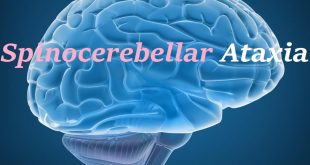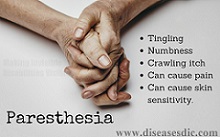Definition Spinocerebellar ataxia (SCA) is a form of the genetically inherited disorder that is characterized by abnormalities in the person’s brain functioning. The disorder represents a varied group of related disorders and is commonly inherited as a dominant trait, meaning that people who carry one of the various different gene …
Read More »Rett Syndrome – Description, Risk factors, Pathophysiology.
Description Rett syndrome is a neurodevelopmental disorder that affects girls almost exclusively. It is characterized by normal early growth and development followed by a slowing of development, loss of purposeful use of the hands, distinctive hand movements, slowed brain and head growth, problems with walking, seizures, and intellectual disability. Although …
Read More »Krabbe Disease (Globoid Cell Leukodystrophy) – Causes and Treatment.
Definition Krabbe disease is an inherited disorder characterized by progressive muscle weakness and stiffness, feeding problems, slowed mental and physical development, vision loss, and seizures. It involves the deficiency in the enzyme galactocerebrosidase (GALC), which is important in the growth and maintenance of myelin, the protective covering around the nerve …
Read More »Diabetic Neuropathy- Symptoms, Prevention and Treatment
Description In general, the term neuropathy refers to damage to the nerves. Diabetic neuropathy is defined as the damage of nerves which occurs as a result of diabetes. Since the diabetic condition is having prolonged high blood glucose levels, nerves are much prone to damage. It affects the different locations …
Read More »Tay-Sachs disease – Definition, Causes, and Treatment.
Definition Tay-Sachs disease is a genetic disorder that destroys the nerve cells in the brain and the spinal cord. It is caused by the deficiency of an enzyme hexosaminidase A. Thus it accumulates much fat and lipids called as gangliosides in brain and nerve cells. This leads to loss of …
Read More »Cauda Equina Syndrome (CES)- Symptoms, Treatment and Prevention
Description Cauda Equina syndrome (CES) is an impaired condition of lumbar plexus, nerve roots, and spinal canal below the termination of the spinal cord. It is a serious, acute neurologic condition. The term cauda equina is referring to the lower end of the spinal cord where the nerve fibres appear …
Read More »Paresthesia – Definition, Risk factors, and Treatments.
Definition Paresthesia is a disorder in the sensory perception in which, in the absence of external stimuli (like cold, warmth of pressure), spontaneous itching or tingling is perceived. In addition, an altered sensation to temperature and touch can occur. Paresthesia may also be an expression of neuropathy. Chronic paresthesia can …
Read More »Multiple sclerosis – Definition, Treatment, and Prevention.
Definition Multiple sclerosis is a disease that involves an immune-mediated process that results in an abnormal response in the body’s immune system that damages central nervous system (CNS) tissues in which the immune system attacks myelin, the substances that surrounds and insulate nerves fibers causing demyelination that leads to nerve …
Read More » Diseases Treatments Dictionary This is complete solution to read all diseases treatments Which covers Prevention, Causes, Symptoms, Medical Terms, Drugs, Prescription, Natural Remedies with cures and Treatments. Most of the common diseases were listed in names, split with categories.
Diseases Treatments Dictionary This is complete solution to read all diseases treatments Which covers Prevention, Causes, Symptoms, Medical Terms, Drugs, Prescription, Natural Remedies with cures and Treatments. Most of the common diseases were listed in names, split with categories.








